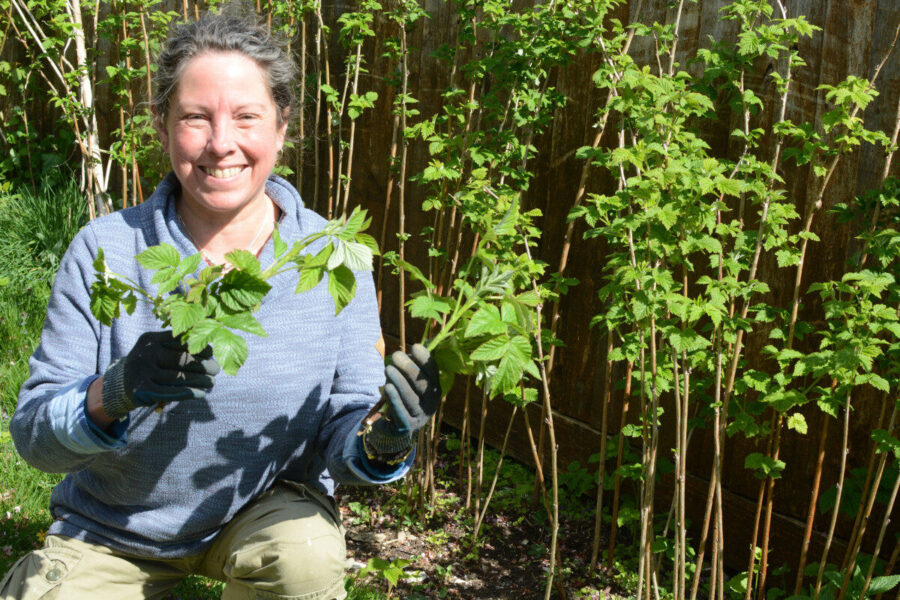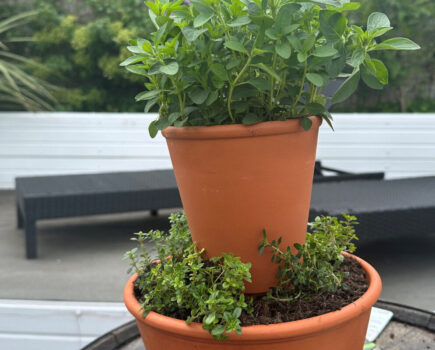These easy cuttings are a great way to fill gaps in future
Nature abhors a vacuum and gardeners abhor waste, so it stands to reason that by deciding to work together we are already half-way along the process of creating a joyful and plant-packed piece of land.
Take our garden, for instance. A row of raspberry canes runs part-way along one side of the fence, at the top end of which there’s an empty piece of scrubby lawn with not a lot going on within it.
Nature has obviously looked askance at this and decided to populate it with wayward raspberry shoots, which is wonderful, but unfortunately she didn’t stop there.
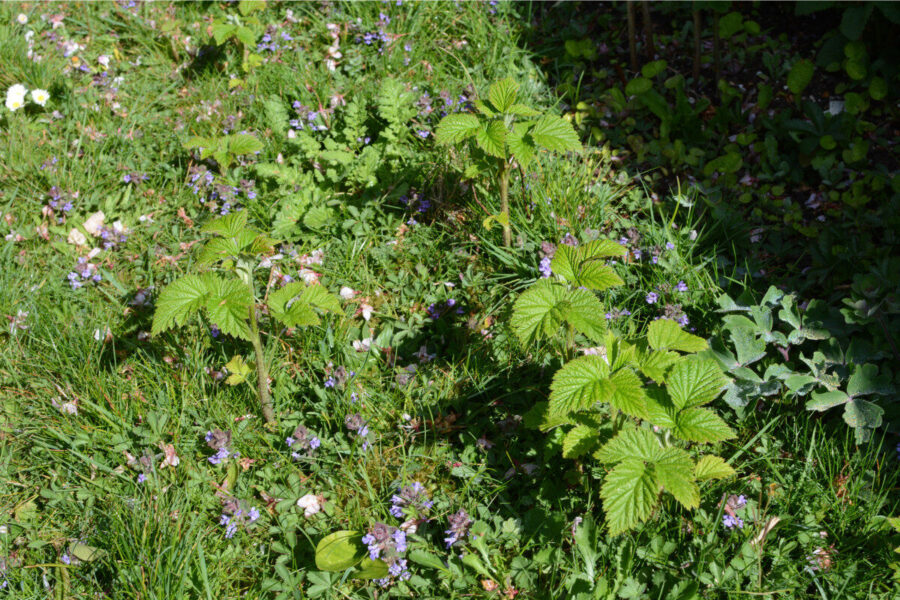
Raspberries can spread like the wind, swiftly taking over, and young canes have started popping up in the lawn and border that lies in that area of the garden. While I adore raspberries (and seasonally snack on them as I go about gardening) I don’t want the plants to run amok.
So also not wanting any potentially new canes to go to waste, and also not wanting to wreck our lawn mower, I’ve grubbed up several and used them as cuttings for spare plants to fill any gaps in our raspberry patch.
It’s easy to do; simply follow the stem of a rogue cane down to the soil and either pull or slice them free – I often find that giving them a gentle tug results in a portion of root coming with them which makes potting up easier.
New plants for next year
As ever when taking cuttings, always choose healthy growth and remove large leaves from down the stem and at the plant tip to reduce moisture loss.
I use peat-free seed compost mixed with vermiculite to root cuttings, as the compost contains just the right amount of nutrients to help baby roots flourish without burning. The vermiculite, or any gritty substance, opens up the compost and helps boost the flow of air and water around the stems and developing rootlets.
I also used rooting powder to help with the development of strong new roots and am hoping that by the autumn, the new raspberry canes will be strong enough to move into larger pots of multipurpose compost, then I can add them to our raspberry patch next spring.
Using stray raspberry canes as cuttings
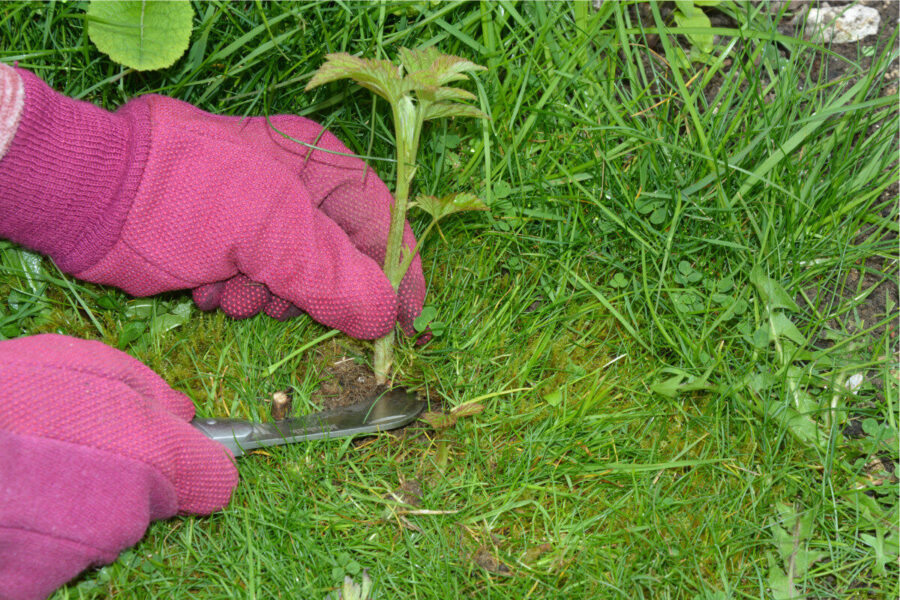
1. Tug or cut the shoot free at ground level, with some roots where possible.
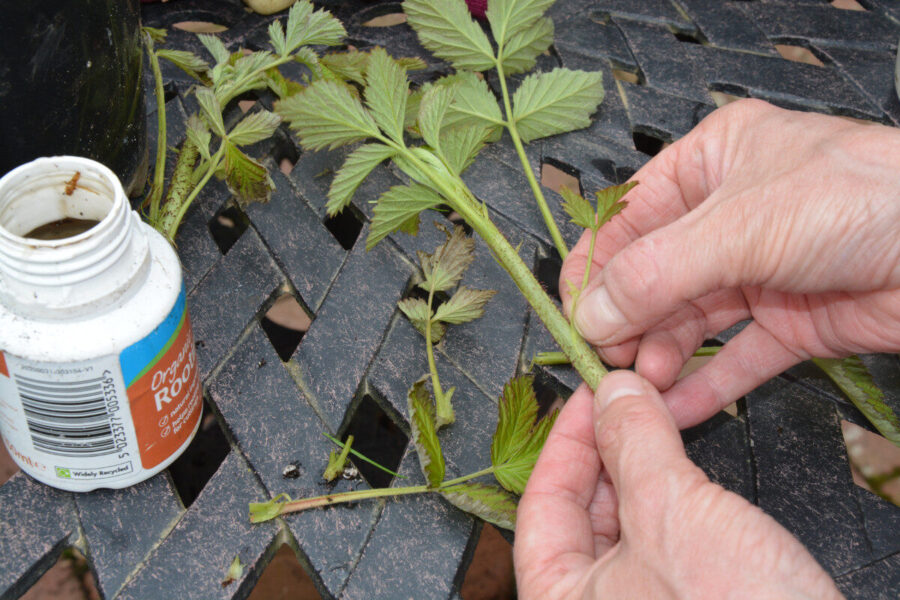
2. Pinch out the largest leaves to reduce moisture loss as the cuttings grow.
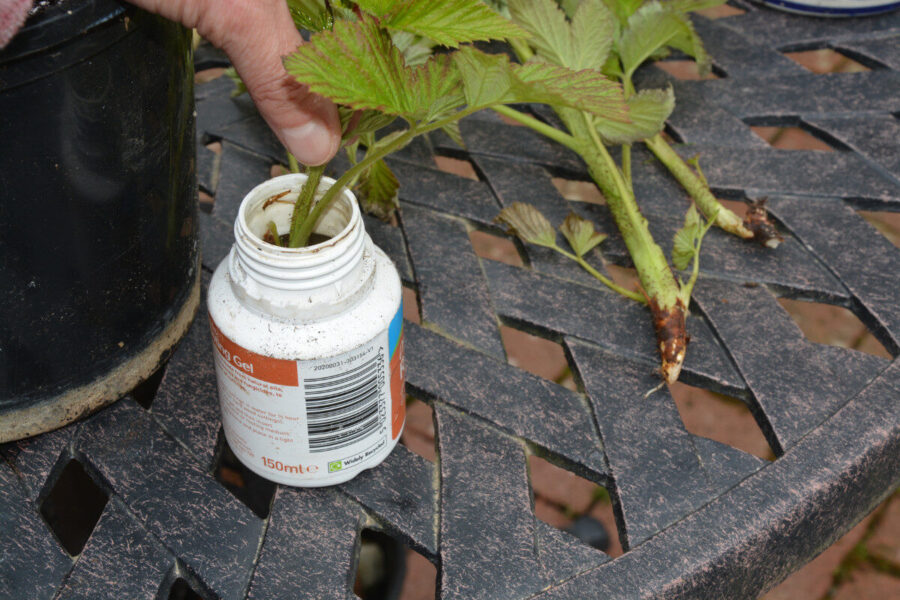
3. Dip the ends in hormone rooting compound to help the new roots prosper.
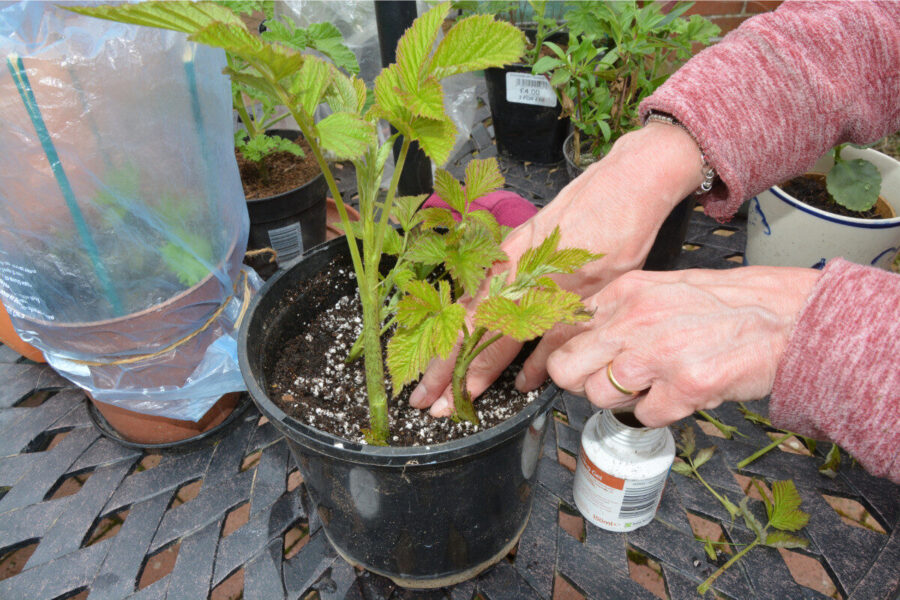
4. Insert your cuttings into damp, gritty seed compost. They should soon start to grow.
Find more tips, advice and articles like this at the Amateur Gardening website. Subscribe to Amateur Gardening magazine now

